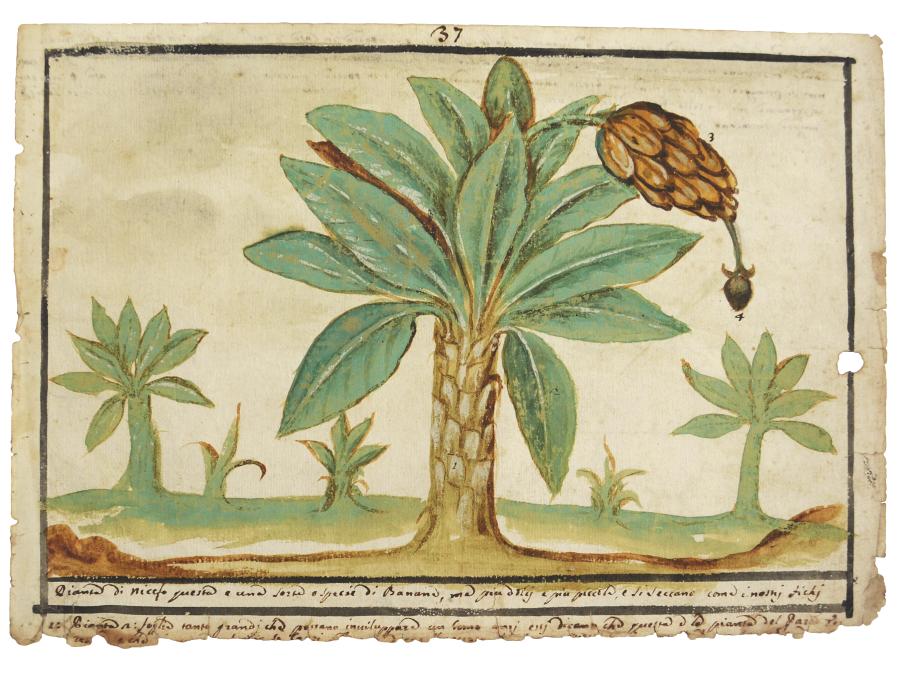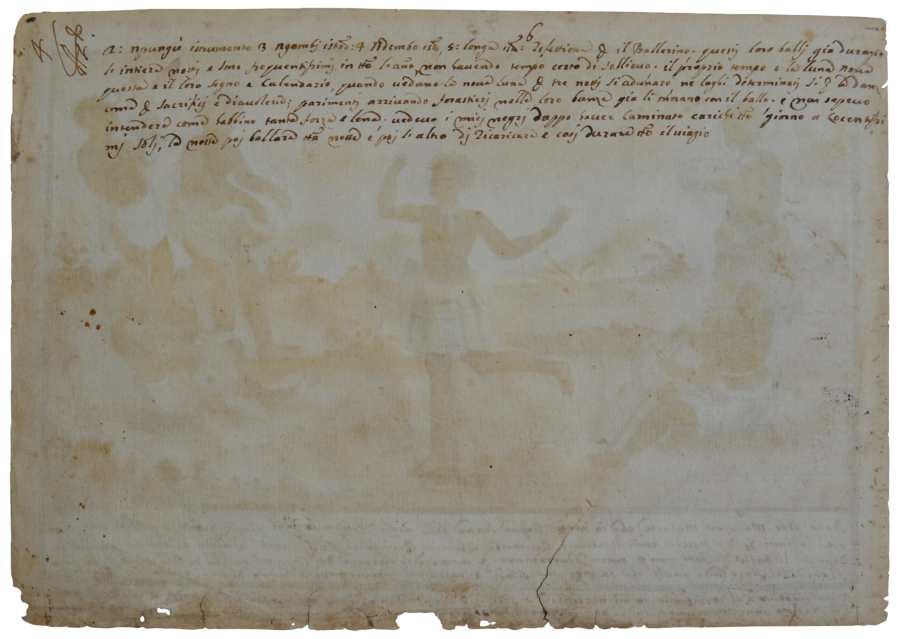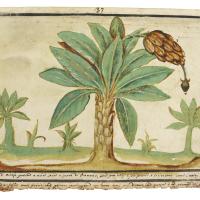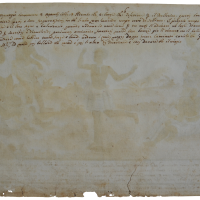PW037: Nicefo plant
Pianta di nicefo1 questa e una sorte o specie di Banana, ma piu dolci e piu piccola e si seccano come i nostri fichi 1: pianta 2: foglie tante grandi che possano inviluppare un homo anzi essi dicono che questa e la pianta del Paradiso Te[restre] e che [. . .] [verso] chiamata galletta ; quando principia a diventar giallo si taglia e si attacca in casa e cosi di giorno in giorno si va maturando; e si vano tirando e mangiandosi si che un grapolo che qua chiamano Cachio2 dura p[er] piu giorni, 4: fiore que[lla] non si mangia et e simila ad un giglio pavonazo3 quando anche e in boccia; questo Arbore e di poca durata p[er] non essere legname; ma un certo humore condenzato con foglia; bene e vero che piantato una volta si hà sempre perche le radiche sempre pullulano nove pianta
Nicefo plant. This is a sort or species of Banana, but sweeter and smaller, and you dry them as our figs. 1: plant 2: leaves so large that they could wrap a man indeed they say that this is the plant of the [earthen] Paradise [. . . one or more lines cut] [verso] called galletta; when it begins to turn yellow you cut it and tie it up in the house and this way day after day it matures; and they pick and eat them so that a bunch which here they call cachio4 lasts several days, 4: flower that cannot be eaten and is similar to an iris when it is still a bud; this tree lasts very little because it is not made of wood; rather [of] a certain humor condensed with leaves; it is very true that planted once it is always there because the roots always pullulate new plants
- 1The friars make a distinction between Niceffo and Banana in their writings, referring to two local categories of fruits from the Musaceae family. See Cavazzi and Alamandini, Istorica descrizione, 35. Pavia, Viaggio Apostolico alle Missioni dell’Africa, f. 81r. Matheus Cardoso talks about “micifos” in 1624 see Brásio, Costa, and Correia, História do Reino do Congo, 37. Pellicer de Tovar, Mission evangelica al Reyno de Congo, 53. It appears as Mizefhos with mention of the size of the leaves “big enough to shade any sized man,” the crucifix in its flesh, and its identity as the tree of the garden of Eden in a late sixteenth century anonymous manuscript, unknown, Description of the kingdom of Kongo, f. 165r. See also the unpaginated vocabulary of words from Matamba in Antonio da Gaeta and Gioia, La maravigliosa conversione. Other mentions are found in Cadornega and Delgado, História geral das guerras angolanas, 1680[-1681], 3: 372. “Niceffos” and their long leaves that could cover a man (in Brazil) and the crucifix inside appear in Dionigi da Piacenza and Michelangelo da Reggio, Viaggio, 49; Dionigi da Piacenza and Michel Angelo da Reggio, Viaggio del P. M. Angelo de Guattini da Reggio et del p. D. de Carli da Piacienza cappuccini, 64-65.
- 2From the Portuguese cacho de banana: bunch of bananas.
- 3Color: dark blue violet similar to the hue of a peacock, a color used in male public dress in Florence. See Carole Collier Frick, Dressing Renaissance Florence: families, fortunes, & fine clothing (Baltimore: Johns Hopkins University Press, 2002), 314.
- 4From Portuguese cacho: bunch.




Add new comment